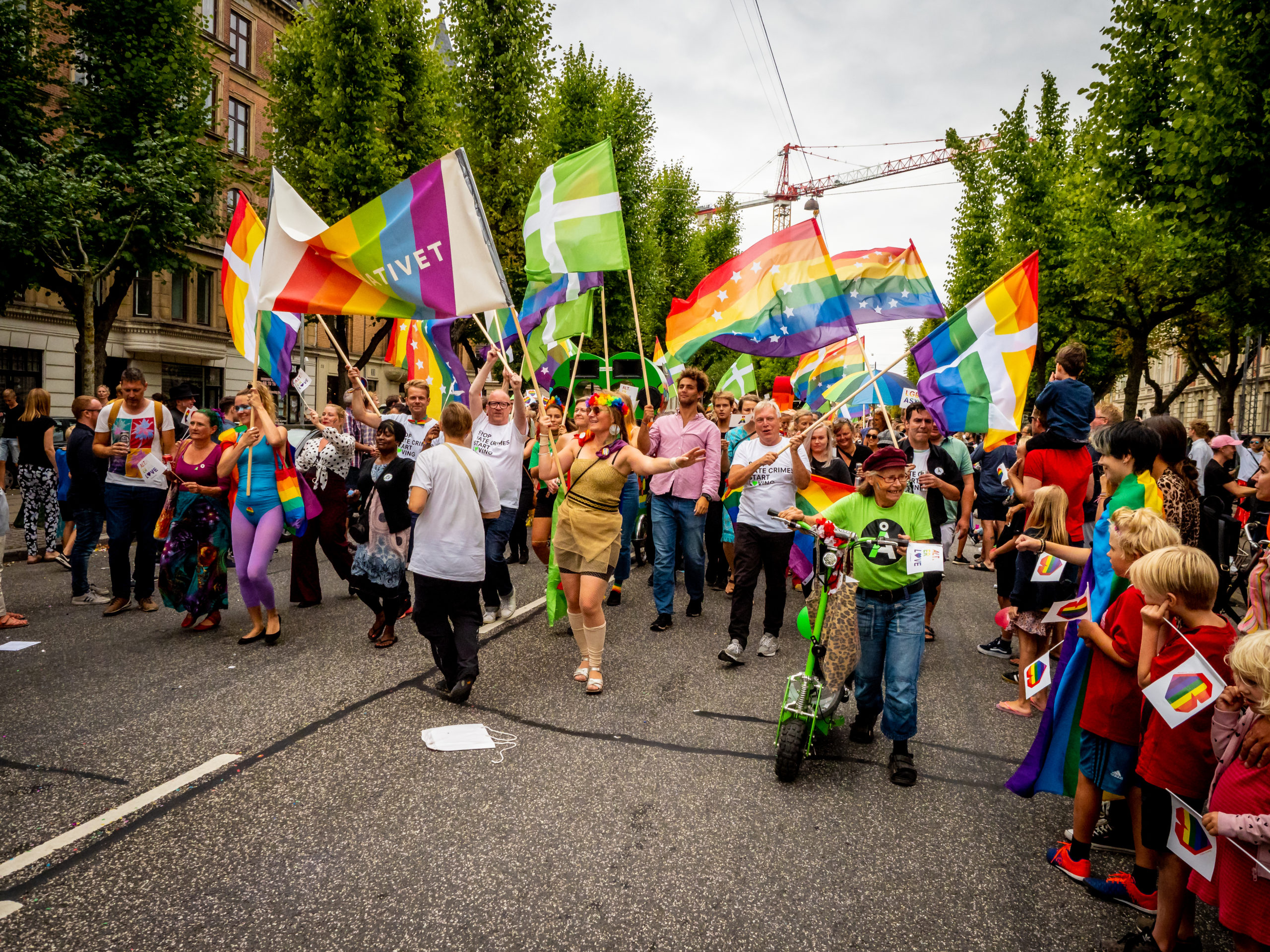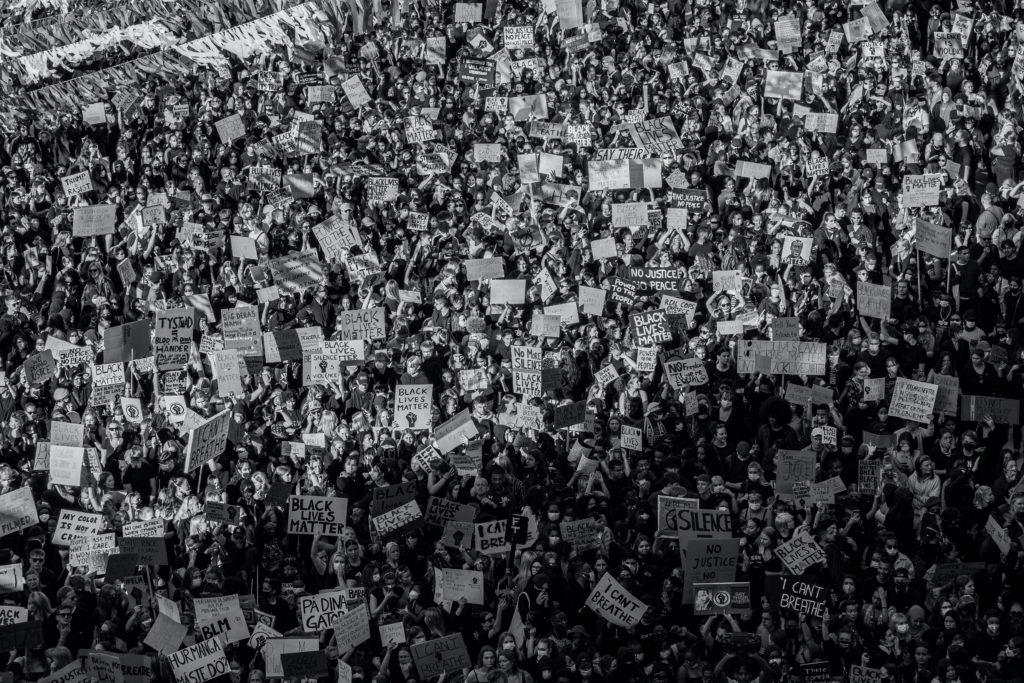
I Predict a Riot – The Sustainability Principle in Revolts
By Anne Sophie Parsons
Image by Tanya Randstoft
Pride and riots are interchangeably linked. From the US-based Stonewall and Compton’s Cafeteria incidents to Bøssernes Befrielsesfront in Denmark, revolts against injustice and discrimination have always been part of the foundation of Pride. At its core, is it then possible to view public protests as the necessary catalyst for Pride organizations to direct their focus on the most pressing political matters and bring about fundamental change?
Glitter and confetti shimmering in the air in a suspended moment. Rainbow-colors among a moving procession of people walking down the street. It’s a recognizable snapshot from your standard Pride parade, where people come together in a festive setting in order to celebrate. Yet Pride movements all around the world have sprung directly from much less celebratory moments, namely LGBTI+ riots; in particular through upheavals and clashes with law enforcement. In that way, Pride has historically functioned as an outlet for the frustration and anger stemming from systemic injustice.
If riots are the other side of the coin in comparison to the celebration of Pride, they might serve as important reminders – as well as continuous cogwheels – that direct a scrutinizing gaze on how far we have yet to go in securing LGBTI+ rights nationally and internationally.
Uprisings as dissatisfaction with the status quo
In the context of LGBTI+ rights, riots have historically helped define the understanding of the LGBTI+ community. When enough is enough, an escalation of interests leads to bloodshed and arrests, but also to a joint effort in assembling and pushing for better political, psychological, and socioeconomic conditions.
Building on that, the sustainability of these revolts can be understood as a set of conjoining factors contributing to a movement such as Pride. Different aspects make up the sustainability of the movement, and one of them is continual progression. It is essential that Pride continues to reassess and adjust itself when elements do not provide a productive development and improvement at its core to keep moving forward.
Sustainability is defined by an interlinked understanding of two aspects: cause and effect. Public protests in themselves can be seen as cogwheels or elements which focus on the sustainable factors of these movements, as well as its flaws: what can be improved and how? Is there a standstill in regards to the movement having a continuous momentum?
Especially in the context of LGBTI+ rights, not agreeing with the political status quo is a direct means of letting protests speak loud and clear. Turning things around and viewing matters from a different angle has better chances of providing insight into what needs to change than speaking into an echo chamber.
Expressing dissatisfaction and anger through planned protests is a manner in which to directly show where the system is lacking.
Protests – Cogwheels of change?
Historically, we know that violence is a more or less unavoidable aspect when clashes between protesters and police take place around the globe. Rather than idolizing physical altercations, the question of what riots and public protests accomplish is what ties them directly to the idea of sustainability.
Riots and public protests against injustice – when LGBTI+ rights are being rolled back, when hate crimes flourish, when people in positions of power disregard and push minorities directly into harm’s way – are ways to question, reassess and revolutionize the understanding of the systemic foundations that have caused the injustices in the first place.
If Pride and protest goes hand in hand, then it is disruption itself that is able to challenge the status quo – by being cogwheels in a sustainable movement of queer rights.
Protests – Cogwheels of change?
Historically, we know that violence is a more or less unavoidable aspect when clashes between protesters and police take place around the globe. Rather than idolizing physical altercations, the question of what riots and public protests accomplish is what ties them directly to the idea of sustainability.
Riots and public protests against injustice – when LGBTI+ rights are being rolled back, when hate crimes flourish, when people in positions of power disregard and push minorities directly into harm’s way – are ways to question, reassess and revolutionize the understanding of the systemic foundations that have caused the injustices in the first place.
If Pride and protest goes hand in hand, then it is disruption itself that is able to challenge the status quo – by being cogwheels in a sustainable movement of queer rights.




